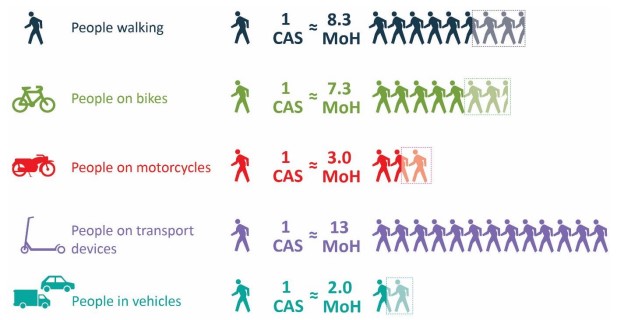Missing injuries
Stuff has an important report on road injuries in Auckland, based on a review by Auckland Transport (that doesn’t seem to be available). They looked at the numbers of serious injuries over three years, both as reported by the police crash analysis system and as reported by the hospitals where the people turned up for treatment. These numbers were not the same
Even the discrepancy for cars is a bit surprising: ‘serious injuries’ here mean hospital admission (an overnight stay). It’s not clear whether the police are missing half the serious-injury crashes or under-reporting how many people end up in hospital, but I would have expected more completeness of reporting for hospitalisation of people in vehicles. (According to the law, even accidents involving bikes or e-scooters without cars that result in injury have to be reported to the police, but I’m less surprised this doesn’t happen.)
Some of the bike and pedestrian and ‘transport device’ injuries that are being missed will be crashes that didn’t involve cars. That’s the dashed/solid distinction in the graph. The data match international research on e-scooter crashes suggesting that most injuries are to the rider, and so may be relatively less likely to get reported to police. For bikes, a potentially worrying category is injuries involving stationary cars — ‘doorings’ — which might be less likely to get reported than those involving moving cars.
Another important concern, though, is the definition of ‘serious injury’. An injury causing broken bones and resulting in weeks or months of significant disability, but not involving an overnight hospital stay, would not be meet the threshold. This implies even the MoH statistics are also missing a lot of injuries that a normal person would call ‘serious’.
Thomas Lumley (@tslumley) is Professor of Biostatistics at the University of Auckland. His research interests include semiparametric models, survey sampling, statistical computing, foundations of statistics, and whatever methodological problems his medical collaborators come up with. He also blogs at Biased and Inefficient See all posts by Thomas Lumley »

For car accidents especially, there is going to be a lot of detail to get right if the two systems are going to be compared. I don’t think the police care where a person gets treated and I don’t think the hospital cares where a person crashes. So serious crashes in Northland and South Auckland/North Waikato are going to cause boundary issues. As are crashes on public/private property and off-road.
1 year ago
That’s very true, but I expect the boundary crashes are a fairly small proportion of the discrepancy even for cars — and more so for bikes and e-scooters.
1 year ago
It seems to be mostly an ‘old’ story from last year .
https://www.nzherald.co.nz/nz/auckland-streets-risky-for-pedestrians-and-cyclists-new-research-shows/433CEUUW3U5T4ZCXQDBJTEJ244/
With some bizarre results
‘The No.1 injury is from a person on their own, tripping on a footpath – 600 such hospitalisations a year.’
1 year ago